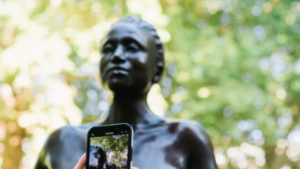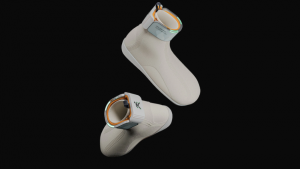Smartphone apps designed to track menstrual cycles often disappoint users with a lack of accuracy, assumptions about sexual identity or partners, and an emphasis on pink and flowery form over function customisation.
Researchers collected data from 2000 reviews of popular period tracking apps, surveyed 687 people and conducted in-depth interviews with a dozen respondents to understand how and why they tracked their menstrual cycles. Nearly half of the survey respondents used a smartphone app to track their periods for the following reasons: to understand their body and reactions to different phases of their cycles; to prepare for their periods; to achieve or avoid pregnancy or to inform conversations with healthcare providers.
As well as the apps, women say they also use other strategies for menstrual tracking including digital calendars, paper diaries, birth control cues, being aware of symptoms, and simply remembering.
“People didn’t feel like the apps were very good at supporting their particular needs or preferences,” says the study's lead author Daniel Epstein, a doctoral student at the University of Washington’s Paul G. Allen School of Computer Science & Engineering. “People felt they were better than tracking their periods on paper.”
The study is among the first to investigate how women track their periods—which is surprising, researchers say, given that it’s one of the first questions doctors ask women. A lack of attention to such an essential component of women’s health surfaced publicly in 2014 when Apple rolled out its HealthKit without any way to track menstrual cycles.
The apps are most accurate if your cycles are really really regular, but the people who most need an app are the people whose cycles aren’t regular.
The new study focused on nine different period tracking apps currently available on the Android Market and Apple App Store, and on what features users liked or disliked, rather than general opinions of the apps themselves. While some apps were much more successful in meeting users’ needs, none was perfect.
The modeling assumptions used in some period tracking apps weren’t accurate or flexible enough to consistently predict their menstrual cycles, particularly when periods weren’t regular. Many apps don’t allow users to correct them when the predictions are wrong or to input data or explanations about why a particularly stressful month or change in birth control might have thrown off their cycles.
Apps rarely allow users to customise results or how they are presented. Someone who is trying to avoid getting pregnant or to prepare for their period, for instance, might want an app to provide a more generous window for predicting when they are ovulating or when their period will arrive so they aren’t surprised. Someone trying to become pregnant would likely want the app to zero in on a narrower span of time when their chances of ovulation are highest.
One significant issue is that few apps are transparent about explaining their methodology or limitations, says coauthor Julie Kientz, associate professor of human centered design and engineering. In working with healthcare providers on a teen health app, she learned that teenage girls were relying on smartphone apps as their primary form of birth control to tell them when they should avoid having sex.
“That’s pretty disconcerting because accuracy can be a problem with these apps. I wanted to understand why they had so much trust in the technology.”
Other users complained that the iconography used in the apps assumed that a woman’s sexual partner would be male, failing to account for those in same sex relationships, and also assume all users identify as female, which excludes transgender users or those with non-binary gender identities. Across the board, app users objected to the use of pink, flowering imagery rather than a more useful and discreet display of the information.
“It’s a trope at this point that the ‘shrink it and pink it’ approach to designing technology for women revolves around making something smaller and making it pink and taking all the functionality out of it,” Epstein says. “We definitely found that in the menstrual tracking apps, and that was one of the things that users had the biggest negative reaction to: ‘Why is my app so pink?'”
The researchers suggest five changes could make period tracking apps more functional:
- Allow users to provide customised feedback to boost accuracy.
- Ditch the pink flowers and other heteronormative stereotypes.
- Be discreet in the design.
- Allow users to export data to other health and fitness tools.
- Recognise that an individual user’s menstrual tracking needs change over time.
Researchers will present the paper at the 2017 CHI Conference on Human Factors in Computing Systems. The Intel Science and Technology Center for Pervasive Computing, the University of Washington, the Agency for Healthcare Research and Quality, and the National Science Foundation funded the work.
This article was written by Jennifer Langston and originally published on the University of Washington news blog.
Read more on womanhood and design:
Lyra Aoko uses the colour red as part of a photographic exploration of womanhood
Replace pads, tampons and cups with this eco-friendly alternative




